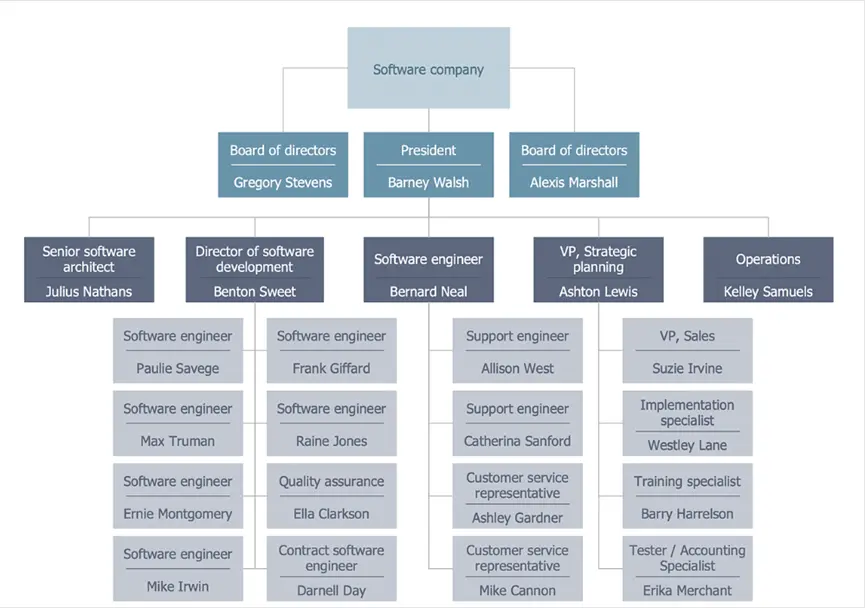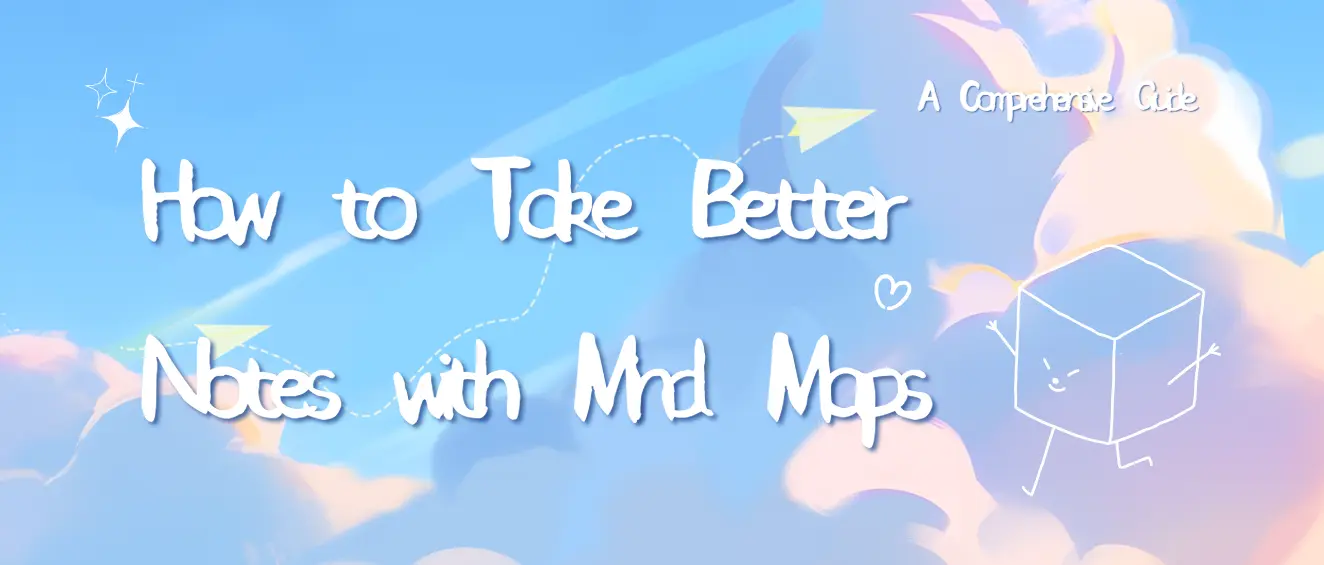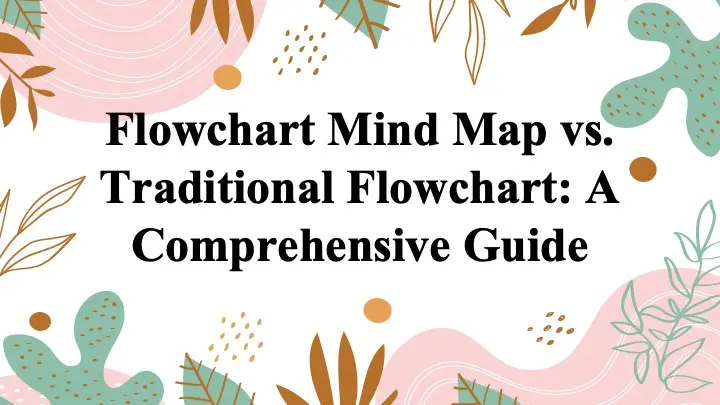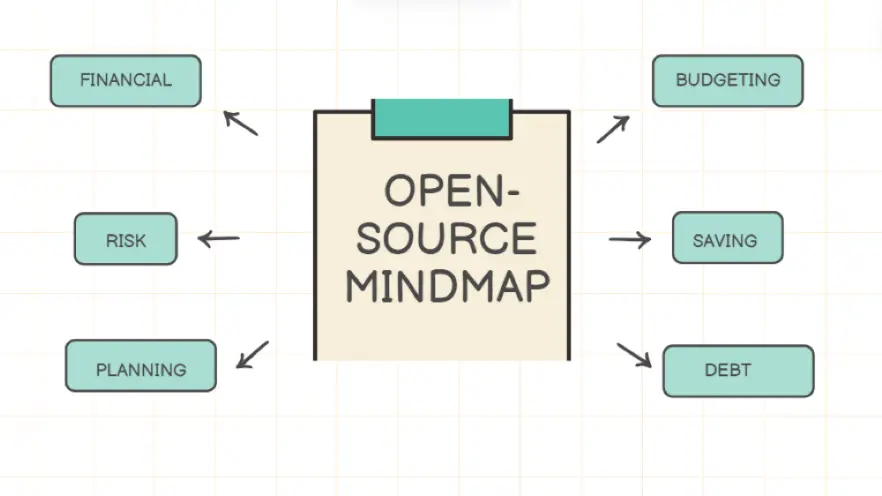Taking effective notes is a critical skill in both academic and professional settings. Whether you’re a student attending lectures, a professional in meetings, or someone who just wants to organize thoughts better, mind mapping offers an innovative and efficient approach to note-taking. Unlike traditional linear note-taking methods, mind maps allow you to visualize connections between ideas, making it easier to understand and remember information. In this article, we will explore how you can use mind maps to take better notes, discuss best practices, and provide examples of when this technique is most beneficial.
The Advantages of Mind Mapping for Note-Taking
Mind mapping is a visual note-taking method designed to organize information in a non-linear, hierarchical manner. This technique simplifies the process of connecting related ideas and enhances the retention and understanding of complex topics. By structuring information visually, mind maps help to clarify relationships between concepts and make it easier to see the bigger picture. This method is particularly beneficial for studying, brainstorming, and planning, as it allows for a more intuitive and flexible approach to managing and processing information. Utilizing mind maps can lead to more effective learning and improved productivity in both academic and professional settings. More benefits of using mind maps for note-taking include:
1. Enhanced Memory Retention
Visual representation of ideas in a mind map engages multiple areas of the brain, making it easier to recall information. The use of colors, images, and hierarchical structures aids in long-term memory retention.
2. Improved Understanding of Relationships
Mind maps allow you to see the relationships between different concepts, which is particularly useful when learning complex subjects. By organizing notes visually, you can better understand how different ideas interconnect.
3. Increased Creativity and Flexibility
Unlike linear note-taking, mind mapping encourages creativity and flexibility. You can easily add new ideas, rearrange concepts, and see the bigger picture without being confined to a rigid structure.
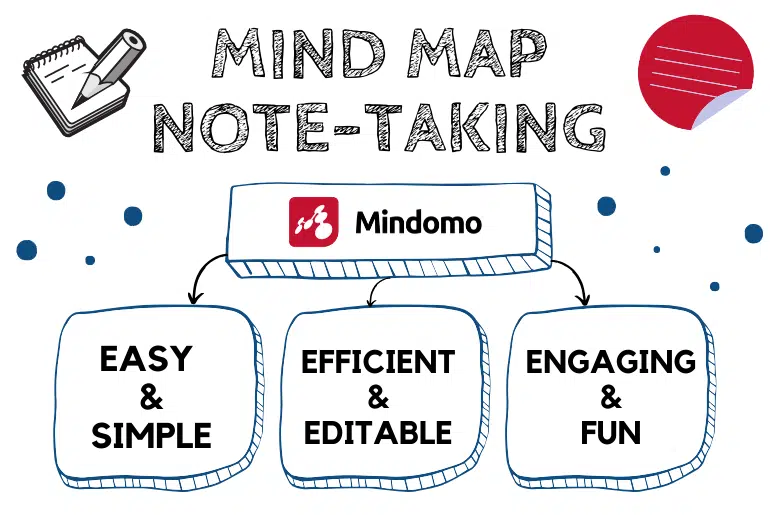
image from: Mindomo
Step-by-Step Guide to Using Mind Maps for Note-Taking
Step 1: Start with a Central Concept
Begin your mind map by writing down the main topic or central concept in the middle of the page. This could be the subject of a lecture, a meeting topic, or the theme of a book you’re reading. The central concept acts as the anchor for all related ideas that will branch out from it.
Step 2: Add Branches for Key Points
From the central concept, draw branches to represent the key points or main ideas. Each branch should represent a different category or aspect of the topic. Use keywords or short phrases to label these branches. The use of keywords instead of full sentences keeps the mind map concise and easy to review later.
Step 3: Expand with Sub-Branches for Details
For each key point, create sub-branches to add more detailed information. This could include examples, explanations, or related ideas. The hierarchical structure of mind maps allows you to break down complex topics into more manageable chunks, making it easier to digest and review later.
Step 4: Use Colors, Images, and Symbols
Incorporating colors, images, and symbols into your mind map can significantly enhance your ability to remember and understand the information. Colors can be used to differentiate between branches or highlight important points, while images and symbols can make the mind map more engaging and memorable.
Step 5: Review and Revise
After completing your mind map, take some time to review and revise it. Ensure that all key points are covered and that the connections between ideas are clear. You can also add additional branches if new ideas come to mind or if you want to explore certain points further.

image from: venngage
When to Use Mind Maps for Note-Taking
Mind maps are particularly effective in certain scenarios where traditional note-taking methods might fall short. Here are some situations where mind mapping can be especially beneficial:
1. Lectures and Presentations:
During lectures or presentations, mind maps can help you quickly capture key points and ideas as they are presented. This method allows you to stay engaged with the material without getting bogged down by trying to write everything down verbatim
2. Brainstorming Sessions:
Mind maps are ideal for brainstorming because they allow you to freely explore different ideas and see how they connect. This makes them a powerful tool for creative thinking and problem-solving
3. Complex Subjects:
When dealing with complex subjects that involve multiple interconnected ideas, mind maps provide a clear visual representation of the relationships between these ideas. This can help you better understand and retain the information
Best Practices for Effective Mind Mapping
To make the most out of mind mapping for note-taking, consider the following best practices:
1. Keep It Simple:
While it’s tempting to include as much information as possible, try to keep your mind map simple and focused. Use keywords and short phrases rather than full sentences to avoid clutter.
2. Use Visual Hierarchy:
Make use of different sizes, colors, and shapes to create a visual hierarchy in your mind map. This helps to emphasize the most important points and makes the map easier to navigate.
3. Be Flexible:
One of the strengths of mind mapping is its flexibility. Don’t be afraid to rearrange branches, add new ideas, or delete unnecessary information as you go along. Your mind map should evolve as your understanding of the subject deepens.

Image from: ar.inspiredpencil
Conclusion
Mind mapping is a versatile and powerful tool for enhancing the way we take notes. By visually organizing information, it significantly boosts memory retention, improves comprehension of the relationships between different ideas, and fosters creativity. Whether you’re attending a lecture, brainstorming new ideas, or studying complex subjects, mind maps can be incredibly useful for making your note-taking more effective and meaningful. By adopting the strategies and best practices outlined in this guide, you can start leveraging mind maps to enhance your note-taking skills, thereby increasing your productivity. This approach not only helps in keeping your notes well-structured but also aids in better understanding and applying the knowledge you acquire.
